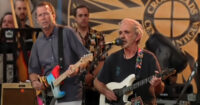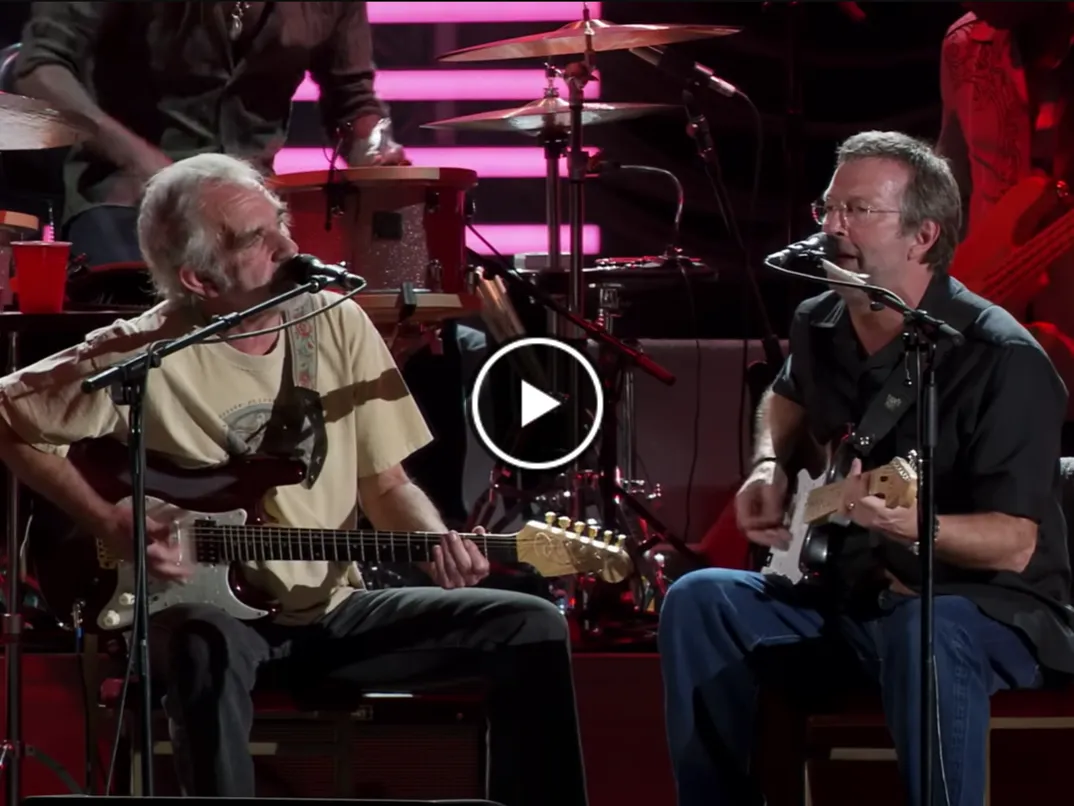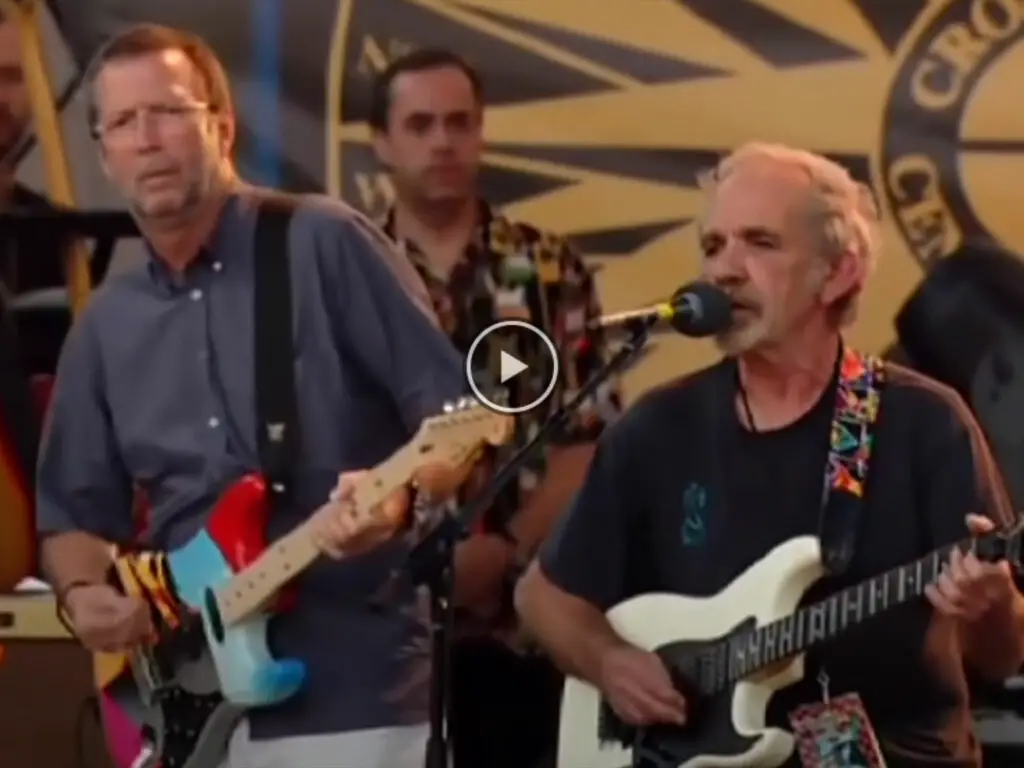
Crossroads of Sound: The Enduring Friendship of Eric Clapton and JJ Cale
I. Introduction
Eric Clapton and JJ Cale are two names synonymous with the very soul of modern blues, rock, and roots music. While each built a legacy that stands on its own, their paths crossed in a way that profoundly impacted both their careers and the music world at large. The story of their friendship is not just about two musical geniuses collaborating—it’s about a deep respect, shared values, and a love for a kind of music that flows effortlessly, never forced, yet incredibly powerful.
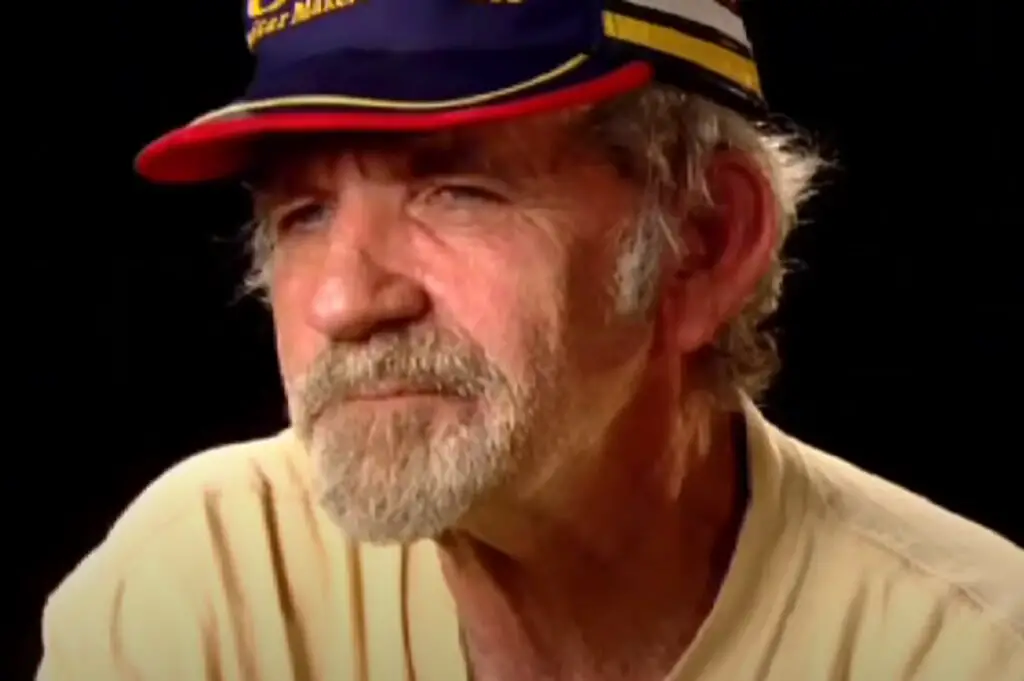
J.J. Cale
Eric Clapton, often referred to as “Slowhand,” is known for his mastery of the guitar and his unparalleled contributions to blues and rock music. From his days with Cream to his solo career, Clapton has shaped generations of musicians. However, it was his admiration for the understated, minimalist style of JJ Cale that led him down a more introspective path in his later career.

J.J. Cale
JJ Cale, on the other hand, was the quiet force behind the scenes, the artist who never craved the spotlight but created music that rippled through the industry. Known for his signature “Tulsa sound”—a mix of blues, country, rockabilly, and jazz—Cale’s influence could be felt far beyond the songs he wrote. He is perhaps best known for penning classics like “After Midnight” and “Cocaine,” both of which Clapton made famous.
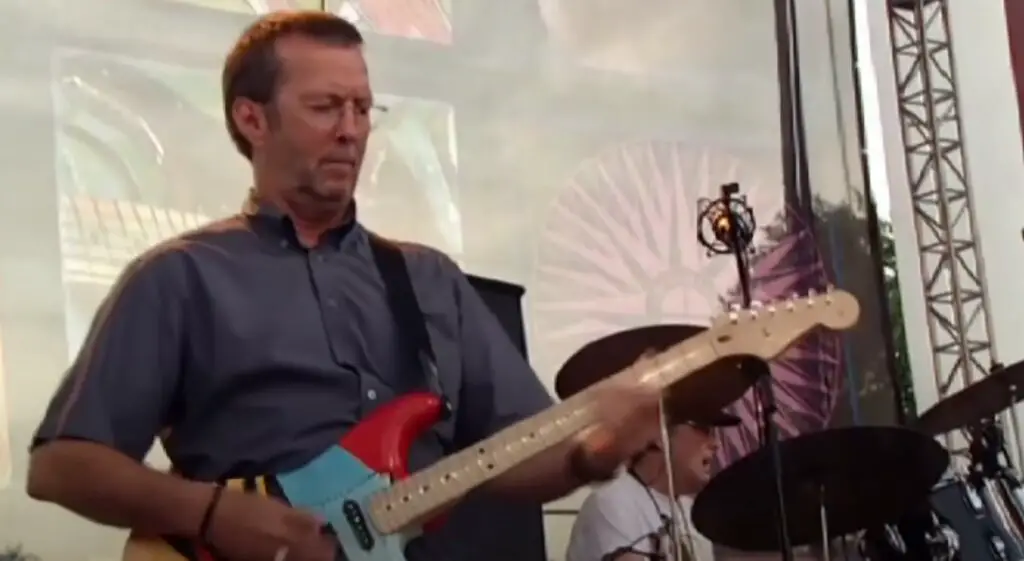
Eric Clapton
Despite their different trajectories, the two artists found a common ground rooted in authenticity, simplicity, and a deep understanding of the craft. Their friendship was not just a meeting of minds but a convergence of musical spirits, each learning from the other, with mutual respect guiding their every collaboration. This enduring bond resulted in a body of work that continues to resonate with musicians and fans alike.

Eric Clapton
In this article, we’ll explore how Clapton and Cale’s friendship evolved, how they influenced each other’s music, and how their collaborations left an indelible mark on music history. Their story is one of quiet revolution—a reminder that sometimes, the most powerful art is born not from fame or fortune, but from the deep respect between two like-minded souls at a musical crossroads.
II. Early Lives and Musical Beginnings
To understand the unique bond between Eric Clapton and JJ Cale, it’s essential to first look at their individual journeys—how they both emerged from different corners of the musical world, yet ended up resonating on the same wavelength.
Eric Clapton’s Early Life and Rise in the British Blues Scene
Eric Clapton was born in Surrey, England, in 1945, and from an early age, he was drawn to music, particularly the blues. As a teenager, Clapton immersed himself in the records of American blues legends like Robert Johnson, Muddy Waters, and B.B. King. These raw, emotionally charged sounds captivated him and became the foundation of his own musical style.
Clapton’s first major breakthrough came in the early 1960s when he joined the Yardbirds, a British band known for blending rhythm and blues with rock. However, his purist dedication to the blues led him to part ways with the group when they began veering toward a more commercial sound. Clapton’s commitment to authenticity became a defining trait throughout his career, and he soon found his place with John Mayall & the Bluesbreakers, where his fiery guitar work earned him the nickname “God” among fans.
By the late 1960s, Clapton had solidified his status as one of the leading guitarists of his generation, particularly through his work with the supergroup Cream. The band’s explosive fusion of blues and psychedelic rock pushed boundaries and garnered international success. Despite this fame, Clapton longed for something more understated—a sound that was closer to his blues roots, which would later draw him to the work of JJ Cale.
JJ Cale’s Early Life and the Birth of the Tulsa Sound
On the other side of the Atlantic, in Oklahoma, John Weldon “JJ” Cale was developing a sound that would quietly revolutionize rock and country music. Born in 1938 in Oklahoma City, Cale grew up surrounded by country music, Western swing, and early rock and roll. Unlike Clapton, Cale wasn’t interested in the spotlight. His approach to music was relaxed, organic, and unhurried, much like the man himself.
Cale began his career in the 1950s, playing guitar in various local bands in Tulsa, Oklahoma, where he would become a key figure in shaping what came to be known as the “Tulsa sound.” This laid-back style blended elements of blues, rockabilly, country, and jazz with a subtle, almost minimalist approach to guitar playing and songwriting. It was music that felt like a lazy summer day—unpretentious, yet deeply evocative.
Unlike the British blues explosion that propelled Clapton to stardom, Cale’s music simmered under the radar for many years. He wasn’t interested in chasing fame or commercial success, preferring to let his music do the talking. It was this very approach that would later draw Clapton to Cale’s work—a simplicity and authenticity that spoke to Clapton’s own evolving musical desires.
Separate Paths, Parallel Inspirations
Though their early lives unfolded worlds apart, Clapton and Cale shared a common musical ethos. Clapton, influenced by the raw power of American blues, had already achieved global fame, while Cale, with his unique Tulsa sound, had quietly influenced many artists without seeking the limelight.
Their paths may have been different, but the same thread ran through both: a deep respect for the purity of sound, a rejection of the overly commercial, and a belief in letting the music breathe. These parallel journeys would soon intersect, marking the beginning of a remarkable musical friendship.
III. The First Crossroads: How They Met
The friendship between Eric Clapton and JJ Cale might never have come to be if it weren’t for a chance musical discovery that brought their worlds together. Their first “meeting” wasn’t in person but through a song that would change the trajectory of both their careers.
Clapton Discovers “After Midnight”
In the late 1960s, Eric Clapton was already a star in his own right, known for his work with Cream and as a solo artist. He was in search of a new direction, looking to move away from the louder, more aggressive sounds of his early career. Clapton found himself drawn to music that was more laid-back, bluesy, and introspective, reflecting his own changing musical sensibilities.
One fateful day, he came across a track called “After Midnight,” written by a relatively unknown artist named JJ Cale. The song had an easy, hypnotic groove, with a loose, effortless feel that stood in stark contrast to the more bombastic rock of the era. Clapton was immediately hooked. He loved the song so much that he decided to record his own version of it for his first solo album, Eric Clapton, in 1970.
Clapton’s rendition of “After Midnight” became a hit, introducing Cale’s music to a much larger audience. Though Cale was unaware of Clapton’s plans to cover the song at the time, it marked the beginning of their musical connection. Clapton had taken Cale’s understated genius and given it a wider platform, turning “After Midnight” into a radio staple and shining a light on Cale’s unique talent.
The Influence of “After Midnight” on Eric Clapton Career
The success of “After Midnight” wasn’t just a commercial milestone for Clapton; it also marked a turning point in his artistic journey. Clapton admired the simplicity and authenticity of Cale’s writing and performance style, which influenced his own music in the years to come. It was this moment that steered Clapton toward a more laid-back, roots-driven sound—one that would define much of his solo work moving forward.
Cale’s influence on Clapton didn’t stop at just one song. Clapton would go on to adopt a more relaxed, organic approach to his playing and songwriting, a style that he felt was closer to the essence of the blues he loved so much. This shift was a direct result of discovering JJ Cale’s work, and Clapton later credited Cale as one of the most significant influences on his post-1970s music.
Their First Personal Encounter
After the success of “After Midnight,” the two musicians finally met in person. Their initial meeting was marked by mutual respect and admiration, but it was also the beginning of a long-lasting friendship. Clapton, who had already achieved rock star status, found in Cale a kindred spirit—someone who valued the music over the fame and who was content to let his art speak for itself.
Cale, on the other hand, was famously low-key and hesitant about fame, preferring to stay out of the limelight. When he first heard that Clapton had covered his song, he was surprised and flattered, but true to his laid-back nature, he didn’t make a big deal out of it. Over time, their professional respect deepened into a personal friendship as they realized how much they had in common musically and personally.
A Meeting of Souls at the Crossroads
Though their first encounter came later in life, Clapton and Cale seemed to have been destined to meet. Their musical sensibilities were perfectly aligned—Clapton admired Cale’s understated approach to songwriting, and Cale appreciated Clapton’s ability to take a song and elevate it while maintaining its integrity. Their meeting marked the beginning of a lifelong friendship that was rooted not in fame or industry politics, but in a deep mutual respect for each other’s craft.
This crossroads of sound—where Clapton’s blues-rock pedigree met Cale’s minimalist Tulsa groove—would eventually lead to some of their most iconic collaborations. It was a meeting that would forever change the course of both their careers, and one that fans of both musicians continue to celebrate to this day.
IV. Collaboration and Creative Exchange
The friendship between Eric Clapton and JJ Cale wasn’t just personal—it was deeply creative. What started as Clapton’s admiration for Cale’s unique musical style blossomed into a partnership that saw both artists influencing each other’s sound and direction. Their collaboration led to a number of projects that combined Clapton’s blues-rock sensibilities with Cale’s laid-back, understated approach, resulting in a distinct sound that has left a lasting imprint on modern music.
How Their Friendship Evolved into Musical Collaborations
After their initial meeting, Clapton and Cale quickly realized that they shared a deep musical bond. Clapton continued to champion Cale’s work, recording more of his songs, including the famous “Cocaine” in 1977. The track became one of Clapton’s biggest hits, but its stripped-back, bluesy structure was unmistakably Cale in origin. Clapton’s versions of Cale’s songs often brought them to a larger audience, but he always remained faithful to the original essence, paying tribute to Cale’s minimalist style.
Their collaboration wasn’t one-sided, either. Cale’s songwriting and production subtly influenced Clapton’s own work. As Clapton began to adopt a more relaxed approach to his music in the 1970s and 1980s, he acknowledged Cale’s influence. Cale’s distinctive “less is more” philosophy, characterized by sparse arrangements and a laid-back groove, encouraged Clapton to strip down his sound, moving away from the heavy guitar-driven rock of his earlier years.
Key Projects and Albums Highlighting Their Collaboration
One of the most significant milestones in their creative partnership came with the release of The Road to Escondido in 2006, a full-length album that was the culmination of years of mutual respect and admiration. This album was a true collaboration, with both Clapton and Cale sharing songwriting duties, vocals, and guitar work. The Road to Escondido was more than just a joint project—it was a musical conversation between two artists who had been influencing each other for decades.
The Road to Escondido received critical acclaim for its smooth blend of blues, rock, and country influences. Tracks like “Danger” and “Hard to Thrill” showcased the duo’s complementary styles, with Clapton’s precise guitar work meshing seamlessly with Cale’s relaxed grooves. The album was a commercial success as well, winning a Grammy for Best Contemporary Blues Album, further cementing their creative legacy.
Beyond this, Clapton continued to perform Cale’s songs live, often including hits like “After Midnight” and “Cocaine” in his setlists. His live performances always honored Cale’s original spirit, with Clapton often commenting on the profound influence Cale had on his music.
Eric Clapton Admiration for Cale’s Laid-Back Style
What drew Clapton to Cale more than anything else was his ability to make complex music sound effortlessly simple. Clapton often remarked that Cale’s music had an elegance to it—a quiet sophistication that didn’t demand attention but was impossible to ignore. Cale’s approach to songwriting and performance was never about showing off technical skill or virtuosity. Instead, he focused on creating a mood, a feeling, and an atmosphere, something that resonated deeply with Clapton as his own career evolved.
Cale, unlike many artists of his time, wasn’t interested in commercial success or the pressures that came with it. This rejection of fame resonated with Clapton, who had already experienced the intense spotlight of stardom. For Clapton, Cale’s music offered a form of freedom—a way to escape the commercial pressures of the industry and return to the essence of blues and roots music.
A Creative Exchange That Spanned Decades
Though Clapton was already a star when he first discovered Cale, their relationship was never one of mentor and student. Instead, it was a creative exchange between equals. Clapton may have introduced Cale’s songs to a wider audience, but Cale’s influence on Clapton’s own music was undeniable. Both artists found inspiration in each other’s work, and their collaboration became a way for both to explore new directions while staying true to their roots.
Their friendship and collaboration were built on a shared love of music that was honest, simple, and authentic. The projects they worked on together, whether it was Clapton covering Cale’s songs or their full-scale collaboration on The Road to Escondido, reflected a deep respect for each other’s craft.
The Legacy of Their Collaboration
The creative partnership between Eric Clapton and Cale left a lasting impact not just on their own music but on the broader landscape of blues, rock, and country. Their collaborations produced timeless songs that continue to resonate with audiences today, and their shared approach to music—eschewing the overly commercial for something more honest and grounded—remains an inspiration to countless musicians.
The collaboration between Clapton and Cale was more than just a coming together of two legends. It was a testament to the power of friendship in music—two artists who, despite their different backgrounds, found common ground in their shared love for simple, authentic sound. Their creative exchange spanned decades, and its influence can still be heard in the music of artists today who seek to honor the spirit of simplicity, authenticity, and mutual respect.
Video source: https://www.youtube.com/watch?v=hncnlbgr86Q
Thank You
We appreciate your time and dedication to reading our article. For more of the finest blues guitar music, make sure to follow our Facebook page, “I Love Blues Guitar”. We share exceptional selections every day. Thank you once again for your continued support and readership.


